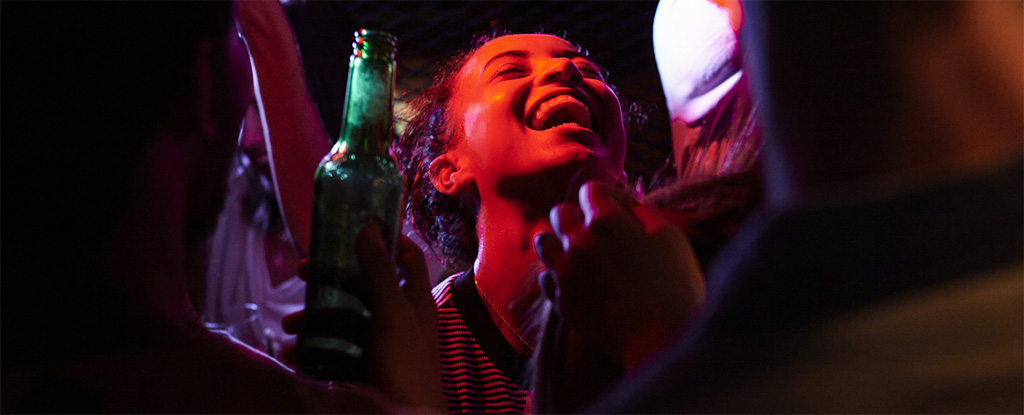The ‘cool kids’ have always been portrayed as a fun-loving, risk-taking bunch, and a new study suggests this may have some basis in fact – for adolescents back in the 90s, at least.
Economist Colin Peter Green from the Norwegian University of Science and Technology, with University of Sheffield health economist Luke B. Wilson and microeconomist Anwen Zhang from the University of Glasgow, investigated how beauty affects young people’s engagement in risky behaviors, that can have consequences later in life.
The research suggests physically ‘attractive’ teens tend to party and drink alcohol more than their ‘average’ or ‘less attractive’ looking peers, an effect that is particularly pronounced among young women.
“Our main finding is that young people who are perceived to have the most pleasing appearance generally drink more and more often engage in binge drinking, which involves several consecutive days of drinking,” Green says.
Good looking teens were almost 15 percent “more likely to engage in underage drinking than their unattractive or very unattractive peers”, the researchers report.
And yet, the economists also found that the teens who were rated ‘most attractive’ were also less likely to smoke, use drugs, or have unprotected sex, compared with others in the study.
The paper is based on data taken from the US National Longitudinal Study of Adolescent to Adult Health (Add Health) which began in the 1994/95 school year, during which a representative spread of adolescents in grades 7–12 were provided an initial in-school questionnaire, followed by a series of more detailed at-home interviews that year, as well as follow-up surveys collected in 1994/95, 1996, 2001/02, and 2007/08.
Green and colleagues analyzed data from more than 30,000 young people who participated in the study through to adulthood, answering questions on how often and how much alcohol they drank in the past month, and if they engaged in binge drinking, smoked tobacco, or used other drugs. They also provided information on unprotected sex and pregnancy.
While this data is interesting in itself, Green and colleagues’ study relies on another set of data collected as part of the Add Health Study: physical attractiveness.
Measuring a person’s beauty seems like a highly subjective exercise, particularly in this case, where adult interviewers were tasked with rating teenagers. With that in mind, each interviewer rated their respondents on a 1-5 scale, with 1 being the least attractive, and 5 being the most. This set of data was done only once, as part of the 1994/95 home interviews. The researchers note that most of the interviewers were women.
“As we only have one interviewer rating for each respondent, it may be argued that ‘beauty is in the eye of the beholder’, and the single rating is entirely subjective,” the authors acknowledge.
But, they point out, a meta-analysis from 2000 found individual beauty ratings did not vary significantly between multiple raters, both within and across cultures, and so while the single-rater approach is not ideal, the authors argue their data is “useful and reliable”.
Green and colleagues suggest that popularity and self esteem, which can be affected in some ways by physical attractiveness, play a role in teens’ risk-taking behaviors. Popular kids might have better access to parties and alcohol for instance, while kids with good self esteem may be less inclined towards risk-taking behaviors.
“Popularity is linked to a higher likelihood of engagement if the risky behavior is perceived ‘cool’, and a lower likelihood if it is considered ‘not cool’; personality attractiveness and self-esteem generally offer a protective role against engagement in risky behaviours across the board,” they write.
Follow-up surveys conducted when the adolescents were adults in 2001/02 and 2007/08 allowed the researchers to evaluate long-term drinking problems. These trends were similar to those seen in underage drinking. The most significant effects seen in adults were that ‘attractive’ girls were more likely to develop drinking problems than their average-looking peers, while ‘unattractive’ boys were less likely.
According to the authors, this suggests that the effects of adolescent attractiveness on risky behaviors persist into early adulthood, potentially impacting skill development and job prospects.
“A young person may appear beautiful and successful, but they may also be carrying emotional baggage that can undermine their self-confidence, such as an unstable home life and mental health issues. This can be a dangerous combination,” Green says.
“The research shows that the risks they take and how they fare later on in life are linked to their inner confidence and self-respect.”
This research was published in the Journal of Economic Behavior and Organization.





